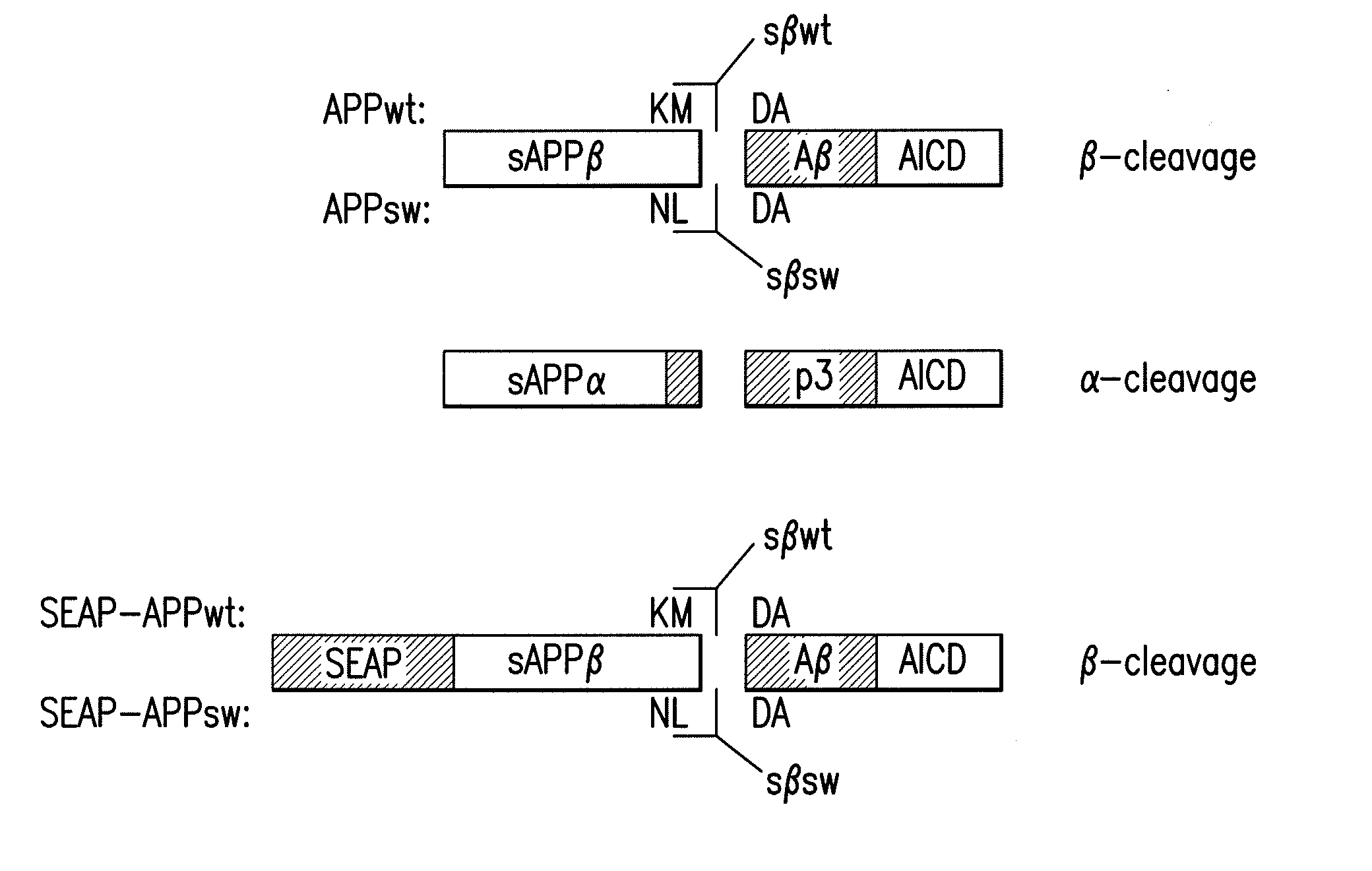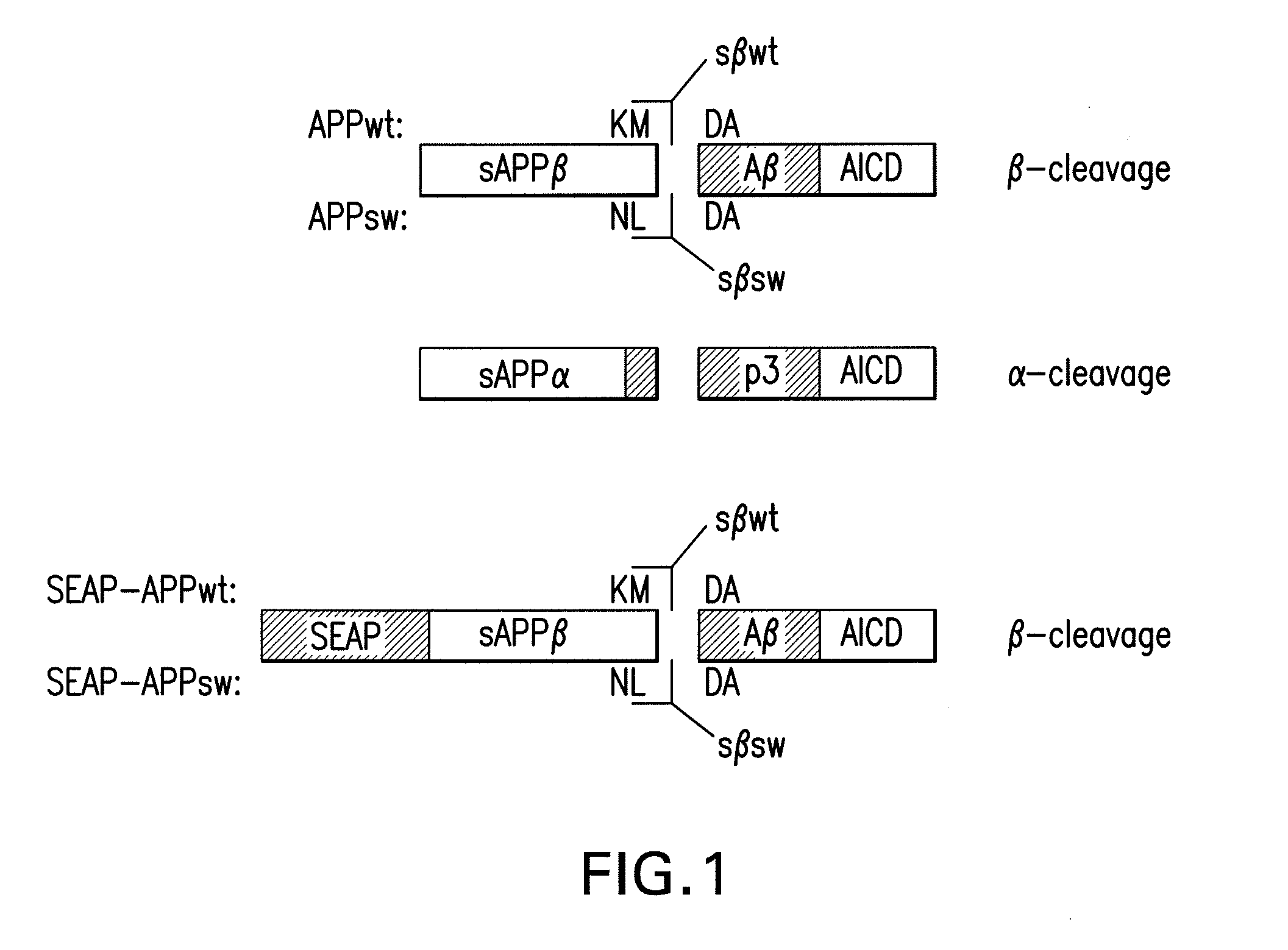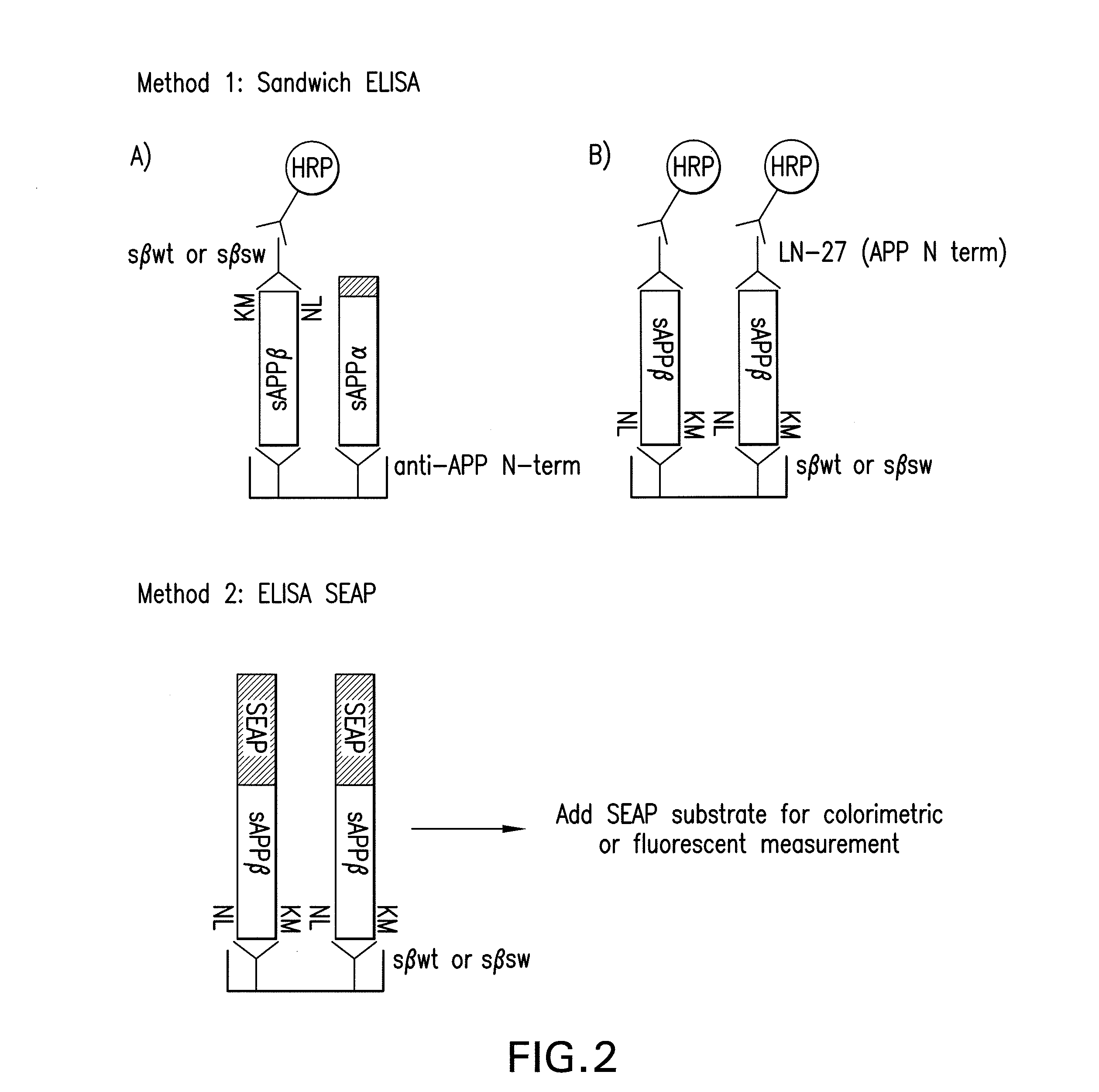Methods and compositions for detecting and quantifying sappb
a composition and method technology, applied in the field of methods and compositions for detecting and/or quantifying sapp, can solve the problems of not being able to detect sapp, not being able to design a compound large enough to achieve the high specificity required for a drug, and many challenges
- Summary
- Abstract
- Description
- Claims
- Application Information
AI Technical Summary
Benefits of technology
Problems solved by technology
Method used
Image
Examples
example 1
βSite Cleavage-Specific Antibodies Against Wild-Type or Swedish Mutant Form of β-Amyloid Precursor Protein (APP)
[0084]To selectively detect soluble APP derived from β-secretase-mediated cleavage, two separate peptides were synthesized based on the human sequence. Each peptide comprised the β-secretase cleavage site of either wild-type or Swedish FAD variants of APP. The sequence of each peptide is set forth below:
sAPPβwt: (C)GGGISEVKM-COOH;(SEQ ID NO:1)sAPPβsw: (C)GGGISEVNL-COOH.(SEQ ID NO:2)
Using standard protocols, the peptides were conjugated with keyhole limpet hemocyanin (KLH) and subsequently used to immunize rabbits to generate the sAPPβwt and sAPPβsw antibodies sβwt and sβsw. If desired, the antibodies may be further IgG purified. Particularly with reference to the ELISA-SEAP, it is preferred to use IgG purified sβwt antibody for capture. IgG purification was carried out using standard procedures. An example of such a standard procedure may be found, e.g., in Sambrook et al....
example 2
sAPPβ Detection Assays
[0085]In the present invention, novel detection methods are disclosed, which are based on antibodies that are specific to sAPPβ (FIG. 1) and discriminate against the α-secretase-cleaved forms of secreted APP (sAPPα).
[0086]As shown in FIG. 2, a first method (1A) is depicted as a sandwich ELISA using an APP N-terminal antibody for capture and the β-site-specific antibodies of the present invention for detection. The labelled third antibodies used to detect the sandwich are goat α-mouse, horseradish peroxidase labelled antibodies. The labelled antibodies and antibody coated plates were obtained from BioSource. The present invention also includes the reciprocal assay (Method 1B in FIG. 2) which uses the β-site-specific antibodies for capture and an APP N-terminal antibody for detection.
[0087]As also shown in FIG. 2, another method is depicted as a hybrid ELISA-SEAP assay that takes advantage of an APP construct containing an N-terminal secreted alkaline phosphatase...
example 3
Specificity of sAPPβ Antibodies
[0088]Human BACE1 (the polynucleotide and polypeptide sequences of which are well known, see, e.g., (4) and (14)) was subcloned into pcDNA3.1 / myc-His vector (Invitrogen) containing a neomycin resistance gene. Commercially available mouse neuroblastoma Neuro2a native cells (such as, for example, ATCC No. CCL-131) were transfected with the BACE-myc construct and selected with G418 (Calbiochem) at 1 mg / ml concentration. Nine colonies were selected (FIG. 3) and probed with the anti-myc antibody 9E10 (Covance) on Western blot analysis. The colony with the highest BACE1 expression (arrow) was selected as the Neuro2a-BACE stable cell line.
[0089]Neuro2a-BACE cells were transiently transfected with empty vector, SEAP-APPwt, or SEAP-APPsw. Culture media was immunoprecipitated with pre-immune serum (P) or the sAPPβ antibody (I) and visualized on Western blot with anti-HA because SEAP-APP constructs also contain an N-terminal HA tag. sβwt reacts only to sAPPwt and...
PUM
| Property | Measurement | Unit |
|---|---|---|
| incubation time | aaaaa | aaaaa |
| concentration | aaaaa | aaaaa |
| volume | aaaaa | aaaaa |
Abstract
Description
Claims
Application Information
 Login to View More
Login to View More - R&D
- Intellectual Property
- Life Sciences
- Materials
- Tech Scout
- Unparalleled Data Quality
- Higher Quality Content
- 60% Fewer Hallucinations
Browse by: Latest US Patents, China's latest patents, Technical Efficacy Thesaurus, Application Domain, Technology Topic, Popular Technical Reports.
© 2025 PatSnap. All rights reserved.Legal|Privacy policy|Modern Slavery Act Transparency Statement|Sitemap|About US| Contact US: help@patsnap.com



